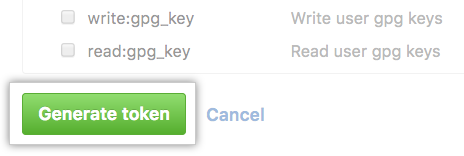About provisioning for Enterprise Managed Users
You can configure provisioning for Enterprise Managed Users to create, manage, and deactivate user accounts for your enterprise members. When you configure provisioning for Enterprise Managed Users, users assigned to the GitHub Enterprise Managed User application in your identity provider are provisioned as new user accounts on GitHub via SCIM, and the users are added to your enterprise.
When you update information associated with a user's identity on your IdP, your IdP will update the user's account on GitHub.com. When you unassign the user from the GitHub Enterprise Managed User application or deactivate a user's account on your IdP, your IdP will communicate with GitHub to invalidate any SAML sessions and disable the member's account. The disabled account's information is maintained and their username is changed to a hash of their original username with the short code appended. If you reassign a user to the GitHub Enterprise Managed User application or reactivate their account on your IdP, the managed user account on GitHub will be reactivated and username restored.
Groups in your IdP can be used to manage team membership within your enterprise's organizations, allowing you to configure repository access and permissions through your IdP. For more information, see "Managing team memberships with identity provider groups."
Prerequisites
Before you can configure provisioning for Enterprise Managed Users, you must configure SAML single-sign on. For more information, see "Configuring SAML single sign-on for Enterprise Managed Users."
Creating a personal access token
To configure provisioning for your enterprise with managed users, you need a personal access token with the admin:enterprise scope that belongs to the setup user.
Warning: If the token expires or a provisioned user creates the token, SCIM provisioning may unexpectedly stop working. Make sure that you create the token while signed in as the setup user and that the token expiration is set to "No expiration".
- Sign into GitHub.com as the setup user for your new enterprise with the username @SHORT-CODE_admin.
- In the upper-right corner of any page, click your profile photo, then click Settings.

- In the left sidebar, click Developer settings.

- In the left sidebar, click Personal access tokens.

- Click Generate new token.

- Under Note, give your token a descriptive name.

- Select the Expiration drop-down menu, then click No expiration.

- Select the admin:enterprise scope.

- Click Generate token.

- To copy the token to your clipboard, click the .

- To save the token for use later, store the new token securely in a password manager.
Configuring provisioning for Enterprise Managed Users
After creating your personal access token and storing it securely, you can configure provisioning on your identity provider.
To configure Azure Active Directory to provision users for your enterprise with managed users, see Tutorial: Configure GitHub Enterprise Managed User for automatic user provisioning in the Azure AD documentation.
To configure Okta to provision users for your enterprise with managed users, see "Configuring SCIM provisioning for Enterprise Managed Users with Okta."